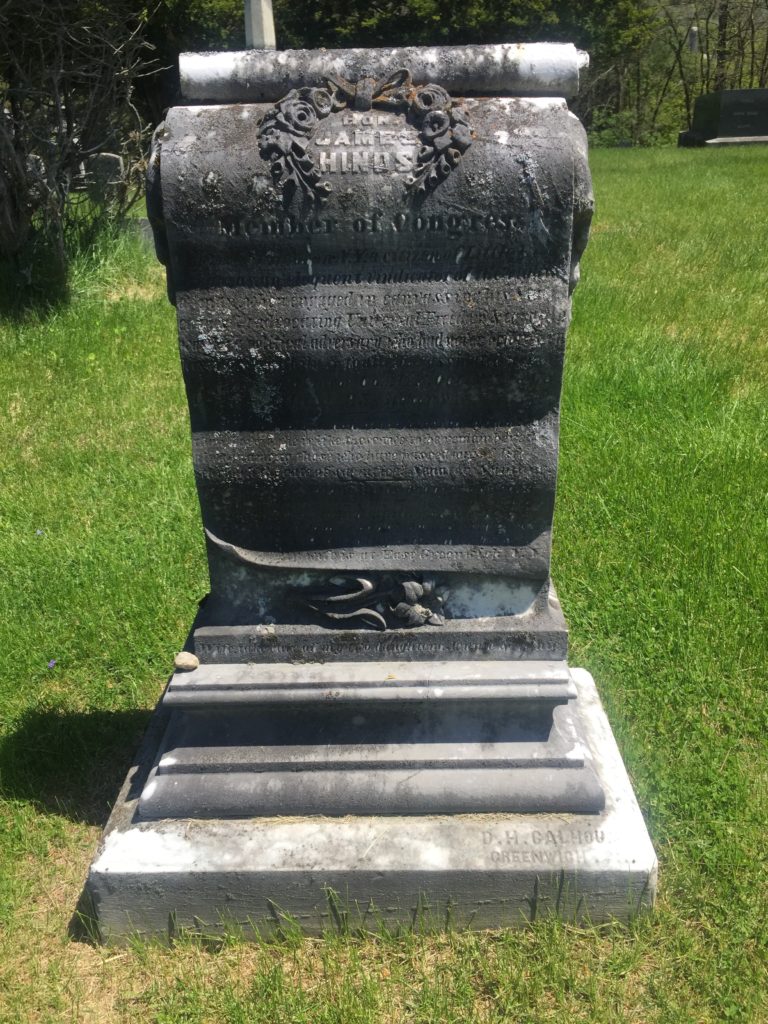Erik Visits an American Grave, Part 962
This is the grave of James Hinds.

Born in 1833 in East Hebron, New York, Hinds was able to go to college at the Albany Normal School, which is the ancestor of the modern SUNY-Albany. He decided to go into the law and ended in Cincinnati going to the Cincinnati Law School. He then passed the bar and went into practice in Minnesota Territory, moving there in 1856. He settled in St. Peter, was involved in the genocidal acts against the Lakota in 1862 that led them to the Dakota War and thus the largest mass execution in American history issued by Abraham Lincoln. By this time, he was DA for the county. But he realized that St. Peter was not going to be a center of Minnesota and he was ambitious. He didn’t intend on spending his life as some small town elite. So in 1865, he and his family moved to Little Rock, Arkansas.
The old “carpetbagger” stereotype of northerners who moved to the South after the Civil War has gone far to serve the powerful mythology of southern resentment toward the Union. That has starkly negative political consequences for the present, for reasons I do not need to explain here. But there was a bit of truth to it. For well-connected Republicans, there were real opportunities in the South. Some of this came out of officers who saw abandoned plantations and realized they could make money getting Black people to grow cotton for them, just with a little bit of pay instead of slavery. For others who did not fight in the war, going south and taking advantage of Reconstruction was a pretty simple economic calculation. That was Hinds. He was a strong Republican, he knew a lot of people in Minnesota politics, and he wanted to make some money. So Arkansas it was.
Now, Hinds may not have fought in the war, but he was genuinely committed to Black rights. He believed that with the end of slavery, the white South should also accept Black equality in voting, education, and other parts of society. He may have gone to Arkansas to make a little money and gain some power, but he also really did believe in this and wanted to fight for it. He was pretty naive and didn’t really understand how deep southern antipathy for the freed slaves and the whites who wanted to help them really was.
Hinds started a law practice in Little Rock with a Union officer named Elisha Baxter, who decided to stick around after the war. With Republicans running the show, there was not only an opportunity but also a need for educated people who could work with the government instead of trying to overthrow it. Both Hinds and Baxter were in the political fight for Black rights. Baxter did very well for himself, later becoming Arkansas’s governor. Hinds became a delegate at the state’s constitutional convention in 1868 that passed a new constitution encoding Black rights into the law. He then won election to Congress under the new Constitution.
In Washington, Hinds pushed for Arkansas to be the first state readmitted under the Reconstruction Acts. In Arkansas, whites seethed at this hated man. This was the peak era of the Ku Klux Klan. Andrew Johnson was surely going to do nothing to crush them. The KKK ran roughshod over the South, murdering, lynching, beating, and/or raping not only Black people who dared fight for their rights or buy land or try to vote, but also whites who helped. Hinds was in Arkansas campaigning for Ulysses S. Grant. He was on his way, riding with another Republican, to the town of Indian Bay, when someone rode up and shot him in the back. He wounded the other guy too. Hinds lived long enough to identify the killer–a local Democratic Party official and Klansman named George Clark. Of course he was never prosecuted for the murder. Hines was 34 years old. The murder of Hines was part of the reason for the Force Acts used by Grant to finally eliminate the KKK, though of course not violent white terrorism in the South.
James Hinds is buried in Evergreen Cemetery, Salem, New York.
Hinds was the first member of Congress assassinated while in office. He wasn’t the first to be killed–others had died in duels or other family killings, but he was the first to be actually assassinated. If you would like this series to visit other members of Congress assassinated in office, you can donate to cover the required expenses here. Leo Ryan is in San Bruno, California and John Pinckney is in Hempstead, Texas. Previous posts in this series are archived here.


